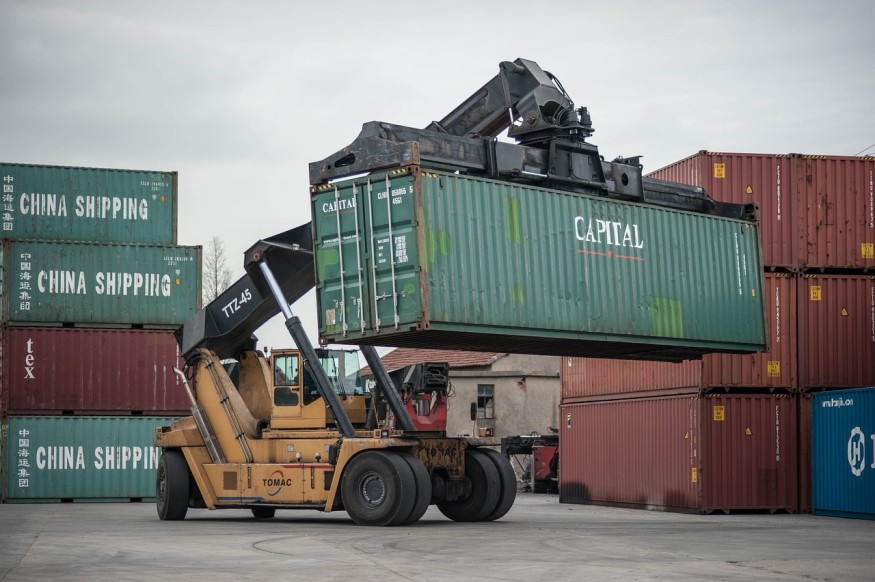Advantages of Using Shipping Containers in Construction

Innovative solutions are constantly being sought after in the dynamic field of construction to satisfy the needs of affordability, flexibility, and sustainability. One such cutting-edge strategy that is becoming increasingly popular is building with shipping containers. Originally intended to carry cargo across oceans, these sturdy steel constructions are proving to be adaptable components with many benefits for the building sector.
1. Sustainability at the Core
Embracing shipping containers for construction aligns with the global push toward sustainability. Repurposing these containers reduces the demand for traditional building materials, minimizing the environmental impact of the extraction and production of new resources. By giving a second life to containers that have completed their maritime journeys, construction projects contribute to a more sustainable and eco-friendly building ethos.
2. Cost-Effective Construction
Cost-effectiveness is one of the main benefits of utilizing shipping containers in construction. These containers are widely accessible, and their standard design makes construction more manageable and significantly less expensive. In addition, the modular design of containers facilitates efficient assembly, resulting in lower labor costs and shorter project completion times. Using shipping containers as building modules offers an alluring financial option in a world where cost-effectiveness is critical.
3. Rapid Construction Timeframes
Traditional construction projects often face delays due to weather conditions and other external factors. Shipping container-based construction, however, offers a solution to this challenge. Containers are manufactured in controlled environments, ensuring consistent quality. Once on-site, assembly is quicker than traditional construction, allowing for faster project completion. This swift turnaround benefits both builders and occupants alike.
4. Structural Integrity and Durability
Built to withstand the harsh conditions of maritime transportation, shipping containers boast exceptional structural integrity and durability. Their steel construction resists environmental elements such as wind, water, and fire. This robustness ensures that buildings constructed from shipping containers have a longer lifespan, requiring less maintenance. In regions prone to extreme weather conditions, this durability can be a crucial factor in the longevity of structures.
Also Read .: DJ Zedd's $18.4 Million Modern Mansion Takes the Spotlight in Encino's Most Expensive Home Sale of the Year
5. Versatility in Design
Shipping containers offer surprisingly flexible design options, unlike the stereotype of stiff metal boxes. The modularity of containers allows architects and builders to design distinctive and visually appealing structures. The design options are endless, ranging from intricate multi-container configurations to single-container homes. Because of their versatility, shipping containers can create temporary and permanent installations, meeting various needs in the construction industry.
6. Mobility and Portability
Shipping containers inherently embody the concept of mobility. Their standardized dimensions make them easily transportable, facilitating the creation of movable structures. This attribute is advantageous for temporary constructions such as pop-up stores, event spaces, or disaster relief shelters. The ability to relocate structures without significant dismantling and reconstruction offers unparalleled flexibility in responding to changing needs and circumstances.
7. Enhanced Security Features
Contrary to popular belief, shipping containers can be designed with surprising flexibility. Architects and builders can use containers' modularity and builders to create unique and aesthetically pleasing structures. The design possibilities range from simple single-container dwellings to complex multi-container configurations. Shipping containers' adaptability allows for constructing both temporary and permanent structures, catering to a wide range of needs in the construction landscape.
8. Repurposing and Recycling
Using shipping containers in construction aligns with the principles of repurposing and recycling. Instead of retiring containers after their shipping lifespan, repurposing them for construction gives them a new purpose. This reduces the environmental impact of discarded containers and contributes to the circular economy. As the construction industry embraces sustainability, the ability to repurpose shipping containers becomes a pivotal aspect of responsible building practices.
9. Energy Efficiency
The inherent qualities of shipping containers contribute to energy-efficient buildings. Their steel structure allows for adequate insulation, helping to regulate internal temperatures. This insulation capability, combined with the airtight nature of containers, reduces the energy needed for heating or cooling. As energy efficiency becomes a focal point in contemporary construction, the use of shipping containers aligns with the broader goal of creating environmentally responsible and energy-conscious structures.
10. Off-Site Construction Opportunities
The modular nature of shipping container construction opens the door to off-site fabrication. Container modules can be pre-fabricated in controlled environments, enhancing precision and quality control. This off-site construction method accelerates project timelines and minimizes on-site disruptions. The reduced on-site construction activities translate into less noise, dust, and inconvenience for surrounding areas, contributing to a more harmonious integration of new structures into existing communities.
By embracing the benefits of using shipping containers for construction, we redefine building design possibilities and contribute to a more sustainable and efficient future. The advantages of incorporating shipping containers extend far beyond the steel walls and modular configurations, from cost savings and quick construction to environmental stewardship and community impact. The humble shipping container is a testament to the ingenuity and adaptability that shape the future of our built environment as the construction landscape evolves.
Related Article : Autonomous Excavator Builds Impressive 6-Meter Dry-Stone Wall
From Digital Models to 3D-Printed Homes: Jaspreet Kaur Lall Explains How the Innovation Changes the Construction Industry

Future Belongs to Green Construction: Sampath Kumar Paspunoori Explains One of the Key Trends in the Construction Industry

Kamala Harris' Campaign Ad Uses Iconic Visuals from Carrie Mae Weems to Connect with Voters

Historic Ancient Roman Ruins in Baalbek Remain Strong After Israeli Air Strikes; Locals Seek Cultural Protection

4 Ways to Honor Departed Loved Ones in Your Home Design














